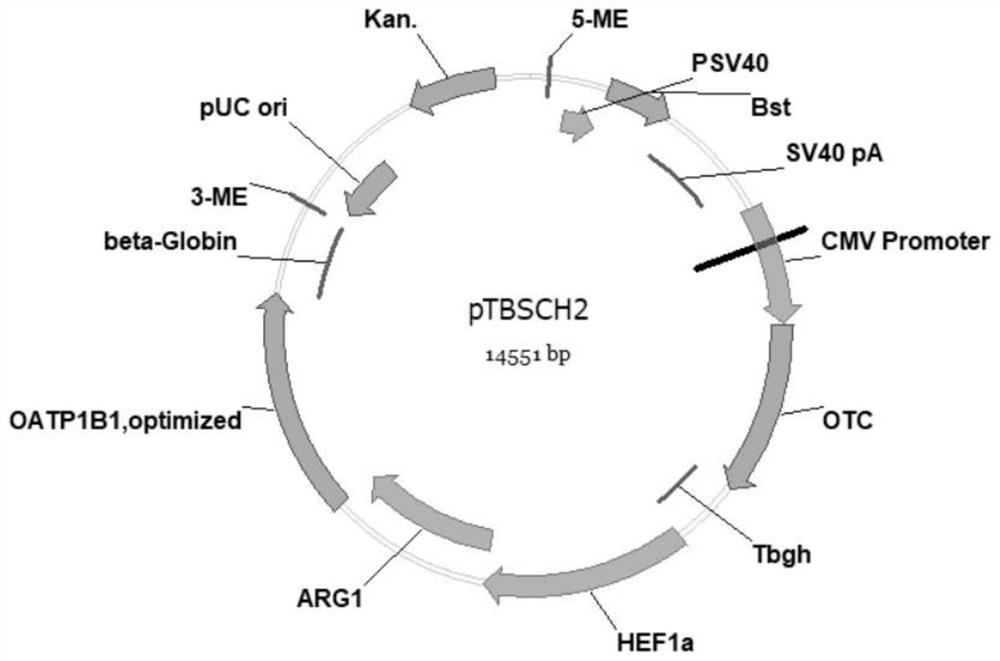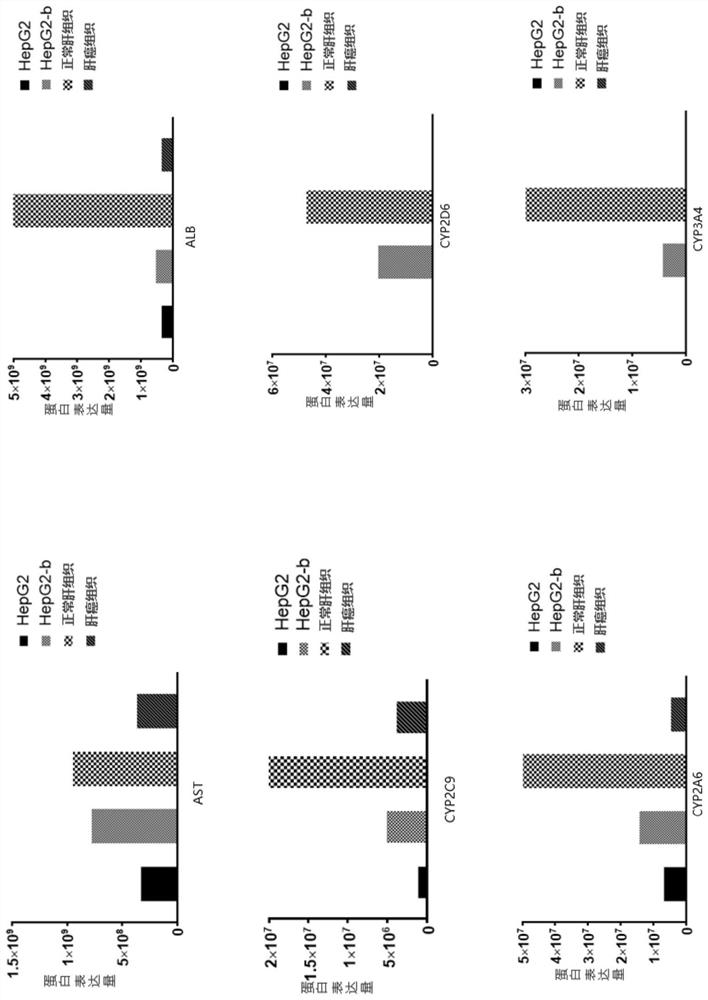Enhanced detoxification function gene fragment and modified hepg2 cells
A technology of detoxification function and gene fragments, applied in the field of genetic engineering, to achieve the effect of improving detoxification ability
- Summary
- Abstract
- Description
- Claims
- Application Information
AI Technical Summary
Problems solved by technology
Method used
Image
Examples
Embodiment
[0031] Embodiment: the scheme of HepG2 cell line transformation:
[0032] 1) The entire genome was assembled into pTBSCH2-OTC-ARG1-OATP1B1-Bst, and linearized. The sequence is shown in SEQNo.2.
[0033] 2) Digest HepG2 cells (ATCC, American Type Culture Collection Center) that night, and its sequence can be found in (NCBIGenBank), and plant them in T25 at a density of 40%-50%, and after overnight attachment, the next morning Perform transfection.
[0034] 3) Transfection reagents and materials
[0035]
[0036] (plasmid:transposon=10:1)
[0037] Mix well, let it stand for 5min, add it to T25, and change the medium according to the state of the cells.
[0038] 4) Five days after the cells were transfected, they were digested and counted, and about 1000-2000 cells per well were seeded into a 96-well plate.
[0039] 5) After the cells have grown to a certain number, continue to seed the plate for screening. After the preliminary detection of negative cells (HepG2), screen...
PUM
 Login to View More
Login to View More Abstract
Description
Claims
Application Information
 Login to View More
Login to View More - R&D
- Intellectual Property
- Life Sciences
- Materials
- Tech Scout
- Unparalleled Data Quality
- Higher Quality Content
- 60% Fewer Hallucinations
Browse by: Latest US Patents, China's latest patents, Technical Efficacy Thesaurus, Application Domain, Technology Topic, Popular Technical Reports.
© 2025 PatSnap. All rights reserved.Legal|Privacy policy|Modern Slavery Act Transparency Statement|Sitemap|About US| Contact US: help@patsnap.com



